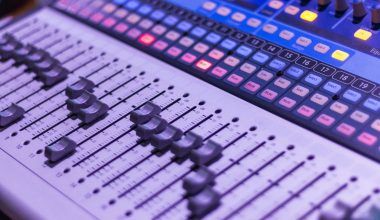When you listen to your favorite music, enjoy a podcast, or edit an audio track, you’re dealing with an audio file. But not all audio files are created equal. They come in different formats, each with its pros and cons. Choosing the best audio file format can make a big difference in sound quality, storage space, and how easily it plays on your device.
This guide will explain audio file formats in simple terms. Whether you’re an audiophile, a music producer, or just someone curious about digital sound, you’ll find the information you need here. By the end of this blog, you’ll know which audio format suits your needs perfectly.
What Is an Audio File Format?
An audio file format is a way of saving sound on a computer or device. It decides how the sound is stored, how big the file will be, and how good the sound will be when you play it. Some formats are made for the best quality, while others are designed to save space.
In general, there are three types of audio file formats:
- Uncompressed formats (like WAV and AIFF): These give you the best quality but take up a lot of space.
- Lossless compressed formats (like FLAC and ALAC): These save space without losing sound quality.
- Lossy compressed formats (like MP3 and AAC): These are smaller and more convenient but sacrifice some quality.
Each type serves a specific purpose, and knowing the difference helps you choose the best audio file format for your needs.
Why Does the Audio File Format Matter?
Choosing the right audio file format matters because:
- Sound Quality: Some formats keep every detail of the sound, while others lose some of it to make the file smaller.
- Storage Space: High-quality files are bigger and take up more space on your device. Smaller files save space but might not sound as good.
- Device Compatibility: Not all formats work on every device. For example, an iPhone supports AAC and ALAC, while some older players only support MP3.
By understanding these differences, you can pick the format that matches your priorities, whether it’s quality, convenience, or both.
Types of Audio File Formats Explained
Let’s break down the main types of audio formats and how they work:
1. Uncompressed Audio Formats
These formats store sound exactly as it is recorded, with no loss of quality. But because they keep every detail, the files are large.
- WAV (Waveform Audio File):
WAV is commonly used in studios because of its excellent sound quality. It’s perfect for editing or recording music. However, WAV files are huge, so they’re not ideal for everyday listening. - AIFF (Audio Interchange File Format):
AIFF is Apple’s version of WAV. It also offers great quality and is often used in music production.
2. Lossless Compressed Audio Formats
These formats shrink file sizes while keeping all the sound quality. They’re a favorite among audiophiles and people who care about top-notch sound.
- FLAC (Free Lossless Audio Codec):
FLAC is one of the most popular lossless formats. It compresses files to save space but still keeps every detail of the sound. It’s great for music collections. - ALAC (Apple Lossless Audio Codec):
ALAC is Apple’s version of FLAC. It works seamlessly with iPhones, iPads, and Macs.
3. Lossy Compressed Audio Formats
Lossy formats make files smaller by cutting out some parts of the sound that most people won’t notice. This makes them perfect for streaming or saving space.
- MP3 (MPEG Audio Layer III):
MP3 is the most common audio format. It strikes a good balance between size and sound quality and works on almost any device. - AAC (Advanced Audio Codec):
AAC is often used for streaming services like Spotify and Apple Music. It sounds better than MP3 at the same file size. - OGG (Ogg Vorbis):
OGG is an open-source format with good quality. It’s used by some music platforms and games.
How to Choose the Best Audio File Format
The best audio file format depends on your situation. Here are some things to consider:
1. Sound Quality
If you want the best sound quality, go for uncompressed or lossless formats like WAV, AIFF, or FLAC. These formats are perfect for recording, editing, or archiving music.
2. File Size
If storage is limited, use lossy formats like MP3 or AAC. These formats shrink file sizes significantly without too much loss in quality.
3. Compatibility
If you need files that work everywhere, MP3 is a safe bet. It’s compatible with almost every device and app.
4. Purpose
- For professional work, use WAV or AIFF.
- For streaming, go with AAC or OGG.
- For personal listening, MP3 is often the best choice.
Best Audio File Format for Different Uses
1. Music Production
For recording or editing, uncompressed formats like WAV or AIFF are ideal. They give you maximum sound quality for professional results.
2. Streaming Music
Streaming platforms often use AAC or OGG. These formats save bandwidth while keeping sound quality high.
3. Archiving Music
If you’re saving music for the future, use a lossless format like FLAC or ALAC. These formats preserve every detail of the sound.
4. Everyday Listening
For casual listening on your phone or computer, MP3 is the most convenient option.
Tips for Managing Audio Files
- Convert When Needed: Use tools to convert files between formats if necessary. For example, convert a WAV file to MP3 for easier sharing.
- Organize Your Library: Add proper tags and organize your files by artist, album, or genre.
- Backup Your Files: Use a lossless format for archiving important audio files to keep them safe.
Selling Music on Beatport
If you’re an artist selling your music on platforms like Beatport, choosing the right format is crucial. Beatport prefers uncompressed formats like WAV because DJs and music lovers expect the highest quality. Using the best audio file format ensures your tracks sound great and helps you build a strong reputation in the music industry.
The Future of Audio File Formats
New formats and technologies are emerging all the time. For example, High-Resolution Audio (Hi-Res) is becoming more popular, offering even better quality than traditional formats. Keeping up with trends ensures you’re always using the best tools for your needs.
Conclusion:
Choosing the best audio file format is all about balancing quality, size, and compatibility. Here’s a quick recap:
- Use WAV or AIFF for professional work.
- Choose FLAC or ALAC for archiving.
- Stick with MP3 or AAC for everyday listening.
Whether you’re listening to music, editing a podcast, or selling tracks on Beatport, the right audio format can make all the difference. Now that you understand your options, you can pick the perfect format for your needs.
Related Articles:
For further reading, explore these related articles:
- How to Claim Amazon Music Artist Profile: A Complete Guide
- Discover the Power of Amazon Music HD: A Guide for Audiophiles
- Eight Affordable Audio Interfaces in 2024 for Aspiring Musicians
For additional resources on music marketing and distribution, visit Deliver My Tune.






